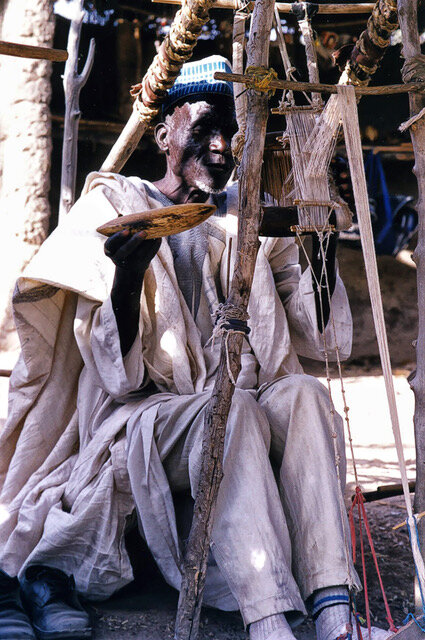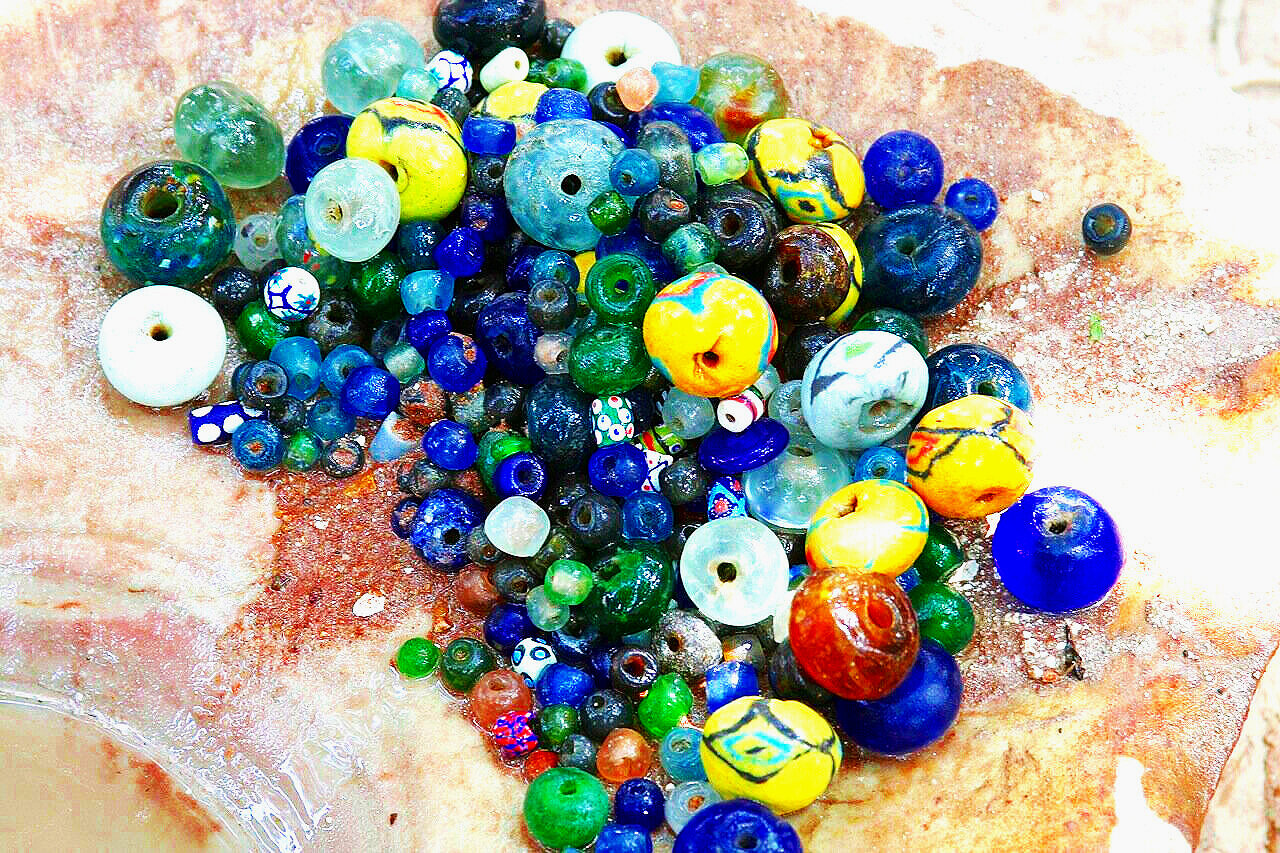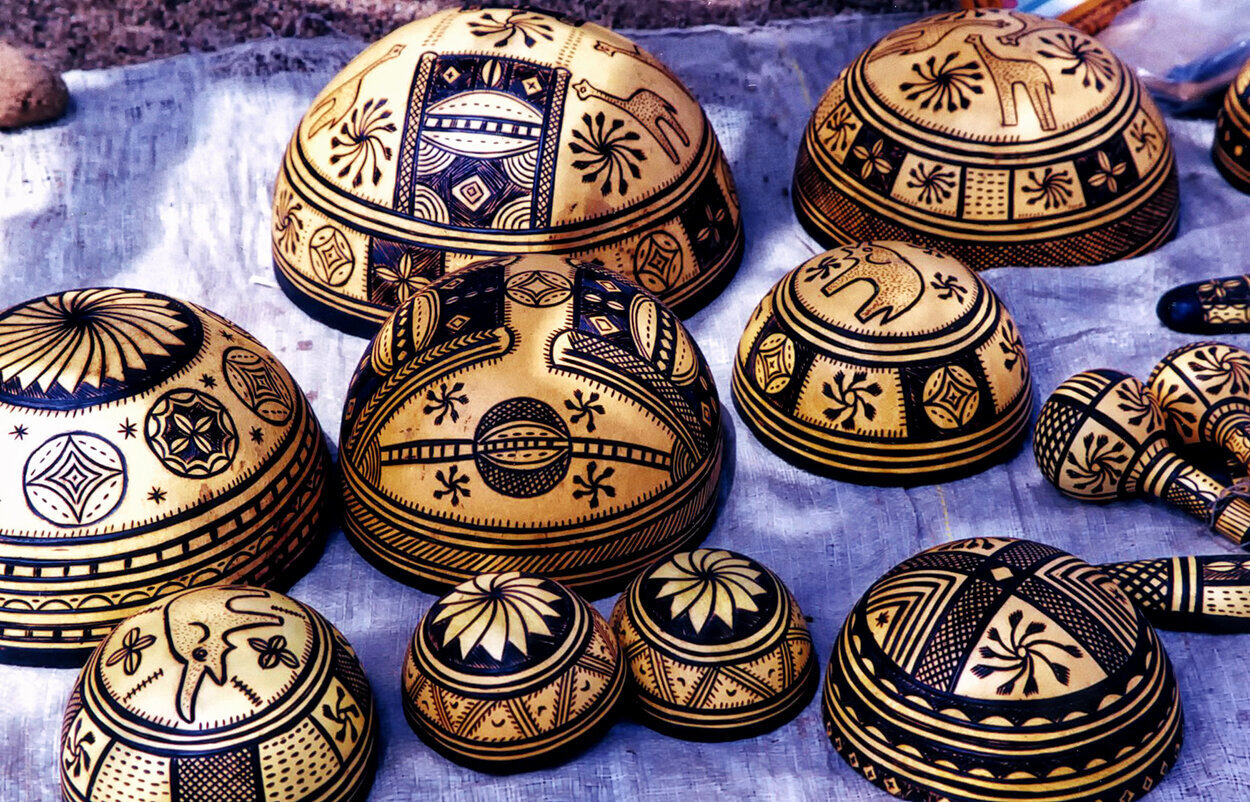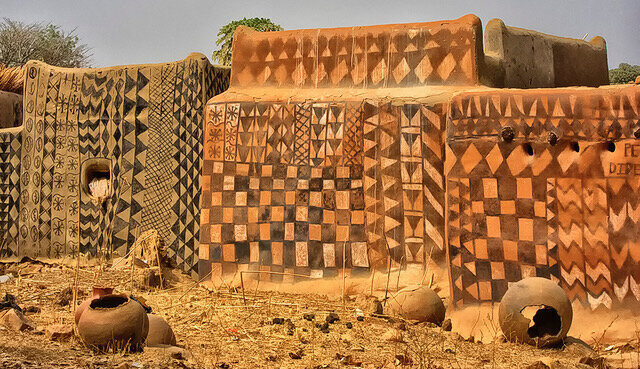
Contemporary textile weaving Senegal
West African Textiles
Textiles speak to us
Nothing else reflects a culture’s traditions more than intricately woven cloth. In many parts of the world, especially in Africa and Indonesia, textiles are used for myriad purposes: body adornment, community identification, or to mark changes in life such as birth, marriage, or death. They can be used for spirit identity and for protection, like an amulet; they can be traded or worn for family, village, or national cultural identity. Textiles can elevate status within a group. They are mobile—they travel easily. Textiles can also be used for dowry and gift exchange, as a way to establish allegiances. They are a means of storing wealth. One friend of mine in Indonesia sold three heirloom textiles to pay for his son’s college tuition.
I have been collecting traditional textiles from all over the world for more than four decades, but some of my favorites from West Africa—like mud cloth and natural indigo from Mali and adinkra and kente cloth from Ghana—resonate with me not only because of the textile itself, but the artisan who created it. Although I am drawn to traditional textiles, I recently discovered some talented resist-dye artisans who were creating stunning resist-technique textiles on large pieces of cotton, Jackson Pollock–style, in Senegal.








